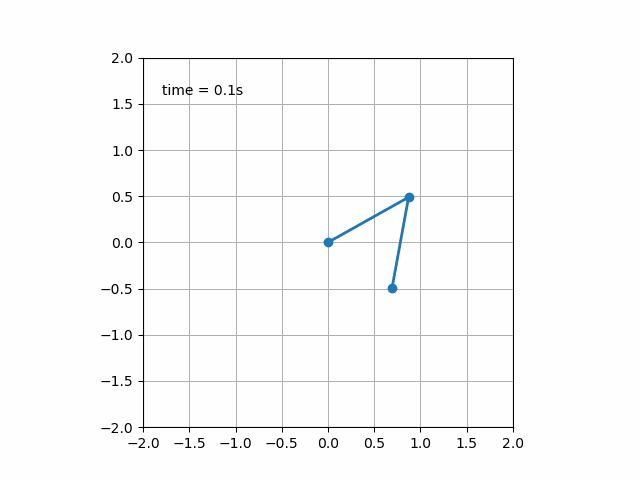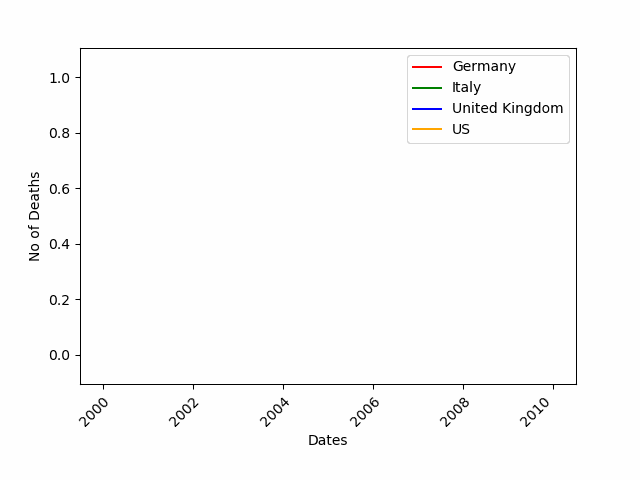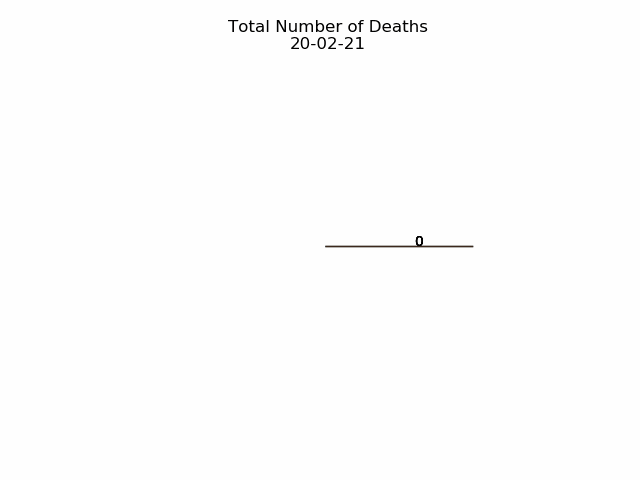点击上方 蓝字关注我们




import matplotlib.animation as ani
animator = ani.FuncAnimation(fig, chartfunc, interval = 100)
-
fig 是用来 「绘制图表」的 figure 对象; -
chartfunc 是一个以数字为输入的函数,其含义为时间序列上的时间; -
interval 这个更好理解,是帧之间的间隔延迟,以毫秒为单位,默认值为 200。
import matplotlib.animation as ani
import matplotlib.pyplot as plt
import numpy as np
import pandas as pdurl = 'https://raw.githubusercontent.com/CSSEGISandData/COVID-19/master/csse_covid_19_data/csse_covid_19_time_series/time_series_covid19_deaths_global.csv'
df = pd.read_csv(url, delimiter=',', header='infer')df_interest = df.loc[
df['Country/Region'].isin(['United Kingdom', 'US', 'Italy', 'Germany'])
& df['Province/State'].isna()]df_interest.rename(
index=lambda x: df_interest.at[x, 'Country/Region'], inplace=True)
df1 = df_interest.transpose()df1 = df1.drop(['Province/State', 'Country/Region', 'Lat', 'Long'])
df1 = df1.loc[(df1 != 0).any(1)]
df1.index = pd.to_datetime(df1.index)

import numpy as np
import matplotlib.pyplot as pltcolor = ['red', 'green', 'blue', 'orange']
fig = plt.figure()
plt.xticks(rotation=45, ha="right", rotation_mode="anchor") #rotate the x-axis values
plt.subplots_adjust(bottom = 0.2, top = 0.9) #ensuring the dates (on the x-axis) fit in the screen
plt.ylabel('No of Deaths')
plt.xlabel('Dates')
def buildmebarchart(i=int):
plt.legend(df1.columns)
p = plt.plot(df1[:i].index, df1[:i].values) #note it only returns the dataset, up to the point i
for i in range(0,4):
p[i].set_color(color[i]) #set the colour of each curveimport matplotlib.animation as ani
animator = ani.FuncAnimation(fig, buildmebarchart, interval = 100)
plt.show()

import numpy as np
import matplotlib.pyplot as pltfig,ax = plt.subplots()
explode=[0.01,0.01,0.01,0.01] #pop out each slice from the piedef getmepie(i):
def absolute_value(val): #turn % back to a number
a = np.round(val/100.*df1.head(i).max().sum(), 0)
return int(a)
ax.clear()
plot = df1.head(i).max().plot.pie(y=df1.columns,autopct=absolute_value, label='',explode = explode, shadow = True)
plot.set_title('Total Number of Deaths\n' + str(df1.index[min( i, len(df1.index)-1 )].strftime('%y-%m-%d')), fontsize=12)import matplotlib.animation as ani
animator = ani.FuncAnimation(fig, getmepie, interval = 200)
plt.show()
df1.head(i).max()
fig = plt.figure()
bar = ''def buildmebarchart(i=int):
iv = min(i, len(df1.index)-1) #the loop iterates an extra one time, which causes the dataframes to go out of bounds. This was the easiest (most lazy) way to solve this :)
objects = df1.max().index
y_pos = np.arange(len(objects))
performance = df1.iloc[[iv]].values.tolist()[0]
if bar == 'vertical':
plt.bar(y_pos, performance, align='center', color=['red', 'green', 'blue', 'orange'])
plt.xticks(y_pos, objects)
plt.ylabel('Deaths')
plt.xlabel('Countries')
plt.title('Deaths per Country \n' + str(df1.index[iv].strftime('%y-%m-%d')))
else:
plt.barh(y_pos, performance, align='center', color=['red', 'green', 'blue', 'orange'])
plt.yticks(y_pos, objects)
plt.xlabel('Deaths')
plt.ylabel('Countries')animator = ani.FuncAnimation(fig, buildmebarchart, interval=100)plt.show()
animator.save(r'C:\temp\myfirstAnimation.gif')
回复下方 「关键词」,获取优质资源

回复关键词 「linux」,即可获取 185 页 Linux 工具快速教程手册和154页的Linux笔记。
回复关键词 「Python进阶」,即可获取 106 页 Python 进阶文档 PDF
回复关键词 「Python面试题」,即可获取最新 100道 面试题 PDF
回复关键词 「python数据分析」,即可获取47页python数据分析与自然语言处理的 PDF
回复关键词 「python爬虫」,满满五份PPT爬虫教程和70多个案例
回复关键词 「Python最强基础学习文档」,即可获取 168 页 Python 最强基础学习文档 PDF,让你快速入门Python
回复关键词 「linux」,即可获取 185 页 Linux 工具快速教程手册和154页的Linux笔记。
回复关键词 「Python进阶」,即可获取 106 页 Python 进阶文档 PDF
回复关键词 「Python面试题」,即可获取最新 100道 面试题 PDF
回复关键词 「python数据分析」,即可获取47页python数据分析与自然语言处理的 PDF
回复关键词 「python爬虫」,满满五份PPT爬虫教程和70多个案例

推荐我的微信号

来围观我的朋友圈,我的经验分享,技术更新,不定期送书,坑位有限,速速扫码添加!
备注:开发方向_昵称_城市,另送你10本Python电子书。

点点在看行不行
本文分享自微信公众号 - 印象Python(Python_logic)。
如有侵权,请联系 support@oschina.cn 删除。
本文参与“OSC源创计划”,欢迎正在阅读的你也加入,一起分享。
来源:oschina
链接:https://my.oschina.net/u/3742960/blog/4720004